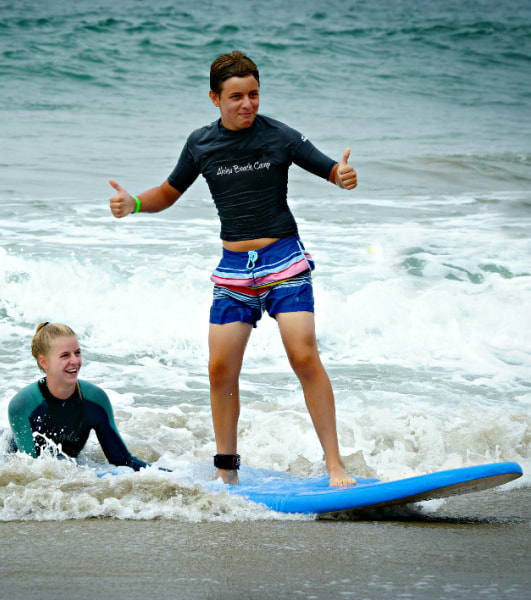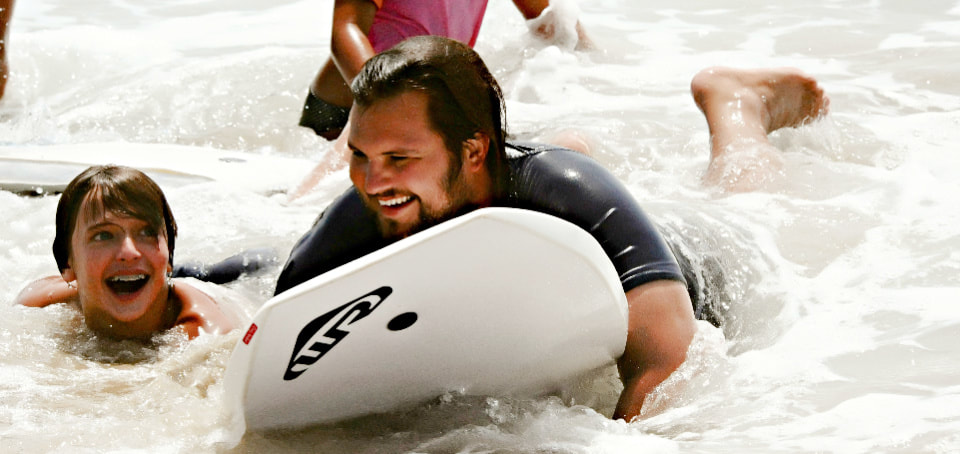|
Want to hear a story about why Aloha Beach Camp's day-by-day enrollment format is so much better and more convenient than other camps that make you sign up according to advance sessions? The following story is based on true events!
Once upon a time, there was a mom named Sarah who was looking for a summer camp for her child. She was excited to find a camp that seemed perfect for her child, but was disappointed to learn that she had to sign up for the camp under prearranged sessions set by the camp. This meant that she had to commit to sending her child to camp for a set number of weeks, even if she wasn't sure if her child would enjoy it or if her schedule would allow for it. Sarah didn't like the idea of being locked into a rigid schedule, and was worried that she might end up wasting money if her child didn't like the camp or if something came up that prevented her from sending her child to camp as planned. She was about to give up on the idea of sending her child to camp altogether, when she discovered that there were some other camps that offered more flexible options. These camps allowed her to sign up for camp by the day, which meant that she could send her child to camp for as many or as few days as she wanted, and could easily adjust her schedule if needed. This was exactly what Sarah was looking for, and she was overjoyed to find that there were camps that offered the convenience and flexibility that she needed. She quickly signed her child up for camp, and was thrilled to know that she could send her child to camp without having to commit to a rigid schedule. In the end, Sarah was grateful that she had found a camp that met her needs and allowed her to send her child to camp on her own terms. She was able to relax and enjoy the summer, knowing that her child was having fun and making new friends at camp, without having to worry about being locked into a rigid schedule. Now doesn't that sound great to you!? It probably goes without saying Sarah ended up sending her child to Aloha Beach Camp. Her child loves camp and she loves picking any days she wants to send her child to camp!
0 Comments
Beach safety is an important issue to consider when planning a trip to the beach. Whether you're going for a swim, enjoying the sun, or taking part in water sports, there are a few key things to keep in mind to ensure that you and your loved ones stay safe.
Aloha Beach Camp's summer beach camp programs always take place at Zuma Beach, Lifeguard Tower 7. This tower is staffed with a public lifeguard supervising our campers and staff at all times.
If you're planning on taking part in water sports, such as surfing or boating, it's important to take the appropriate safety precautions. This may include wearing a life jacket or taking a lesson from a trained instructor. These steps can help reduce the risk of accidents and ensure that you enjoy your time at the beach safely. Finally, it's important to remember that the sun can be dangerous, especially during the hottest times of the day. Be sure to use sunscreen with a high SPF, and reapply it often to protect your skin. Wear a hat and sunglasses to protect your face and eyes, and take breaks in the shade to avoid overheating. In conclusion, beach safety is an important issue to consider when planning a trip to the beach. By taking the appropriate precautions and being aware of potential dangers, you can ensure that you and your loved ones have a safe and enjoyable time at the beach. Boogie boarding, also known as bodyboarding, is a popular water sport that kids enjoy at Aloha Beach Camp. It's a great way to have fun in the waves and enjoy the ocean, but it's important to boogie board safely to help avoid injuries and accidents.
Our camp counselors will be with your kids every step of the way providing instruction and assistance to help your camper boogie board in a safe and fun manner this summer at camp. But we also realize kids and families may want to boogie board on their own, so we've put together this article to help you be safe when boogie boarding in the ocean. First and foremost, make sure you have the right equipment. A boogie board should be the right size and weight for you, and it should be in good condition. You should also have a leash that attaches your board to your wrist, so you don't lose it in the water. Next, choose the right location. Look for a beach with gentle waves and no rocks or other hazards. Avoid beaches with strong currents or rough surf, as these can be dangerous for boogie boarding. If you're not sure about the conditions, ask a lifeguard or other beach official for advice. Once you're ready to hit the water, start by lying on your stomach on the boogie board with your arms extended in front of you. Kick your legs to propel yourself forward and use your arms to steer the board. Keep your head up and look for oncoming waves, and try to ride them as they break. If you fall off your board, don't panic. Hold onto the leash and swim back to your board. If you're having trouble, raise your hand and wave for help. A lifeguard or another beachgoer may be able to assist you. It's also important to be aware of other beachgoers and avoid colliding with them. Keep a safe distance from other boogie boarders and swimmers, and watch out for boats and other watercraft. In conclusion, boogie boarding can be a fun and exciting way to enjoy the ocean, but it's important to do so safely. Follow these tips to have a fun and safe time on your boogie board. Happy boogie boarding! |
AuthorThis blog is written and maintained by Eric D. Naftulin, Aloha Beach Camp's owner and Executive Director the the past 20 years. Archives
May 2024
Categories
All
|
|


 RSS Feed
RSS Feed

